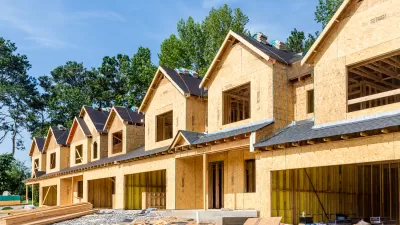Plentiful natural gas produced from neighboring Pa. makes it easier for New York City buildings to comply with a regulation to convert dirty heating oil burners to use cleaner fuels like natural gas while the state has a six-year fracking moratorium
Thousands of buildings in New York City are fouling the air by burning dirty home heating oil. The city now requires buildings with oil burners to convert them to burning a cleaner fuel while the state bans natural gas drilling that use the controversial practice of hydraulic fracturing, or fracking. NPR correspondent Jeff Brady looks at both sides of the natural gas paradox.
How dirty is heating oil? It depends on the number assigned to the heating oil. "The heaviest grade, No. 6 oil, resembles tar or asphalt," according to NYC Clean Heat.
NYC Clean Heat indicates that "10,000 buildings in New York City burn heavy forms of heating oil, but they contribute more soot pollution than all cars and trucks on the City’s roads."
Website regulations indicate that "New York City Department of Environmental Protection will phase out the use of No. 6 and 4 heavy heating oils in New York City", requiring conversions to "one of the cleanest fuels, which may include natural gas, ultra-low sulfur 2 oil, biodiesel, or steam upon boiler or burner retirement or by January 1, 2030, whichever is sooner." No. 6 heating oil will be phased out "no later than June 30, 2015."
As we noted here last year, Fred Krupp, president of the Environmental Defense Fund stated, "Upgrading these buildings to cleaner heating fuel is the single largest step New Yorkers can take to solve local air pollution."
However, it's not just a matter of being green so that the city's residents can breathe cleaner air. The fuel is significantly cheaper that heating oil, enticing building owners to convert to it. How much cheaper?
Brady pays a visit to a "100-unit building on the Upper East Side that Burt Wallack's company manages. The owners are spending nearly $300,000 to make the switch."
"In this particular building, it was a no-brainer — the payback will be in about three years," Wallack says. "The day we switch over, we'll start saving approximately 50 percent of our energy costs."
And cheaper heating translates into lowering the cost of living. As noted here in 2009, expensive home heating oil was among many items listed explaining why the middle class are fleeing NYC.
In essence, New York State is benefiting from the fracking of the Marcellus Shale in Pennsylvania (that also exists under New York) as the increased production is lowering natural gas prices, making it easier to clean the air in its biggest city while Albany bans the practice within its own borders. Is it having it both ways?
Listen to story.
FULL STORY: How Fracking In Pennsylvania Helps Clear The Air In New York

Pennsylvania Mall Conversion Bill Passes House
If passed, the bill would promote the adaptive reuse of defunct commercial buildings.

Planning for Accessibility: Proximity is More Important than Mobility
Accessibility-based planning minimizes the distance that people must travel to reach desired services and activities. Measured this way, increased density can provide more total benefits than increased speeds.

Fair Housing Cannot Take a Back Seat to ‘Build, Baby, Build’
If we overlook fair housing principles in the plan to build US housing back better, we risk ending up right back where we started.

LA Metro Board Approves New 710 Freeway Plan
The newest plan for the 710 corridor claims it will not displace any residents.

Austin’s Proposed EV Charging Rules Regulate Station Locations, Size
City planners say the new rules would ensure an efficient distribution of charging infrastructure across the city and prevent an overconcentration in residential areas.

Making California State Parks More Climate-Resilient
A recently released report offers recommendations for keeping state parks healthy and robust, including acquiring additional land for conservation and recreation.
City of Costa Mesa
Licking County
Barrett Planning Group LLC
HUD's Office of Policy Development and Research
Mpact Transit + Community
HUD's Office of Policy Development and Research
Tufts University, Department of Urban and Environmental Policy & Planning
City of Universal City TX
ULI Northwest Arkansas
Urban Design for Planners 1: Software Tools
This six-course series explores essential urban design concepts using open source software and equips planners with the tools they need to participate fully in the urban design process.
Planning for Universal Design
Learn the tools for implementing Universal Design in planning regulations.























